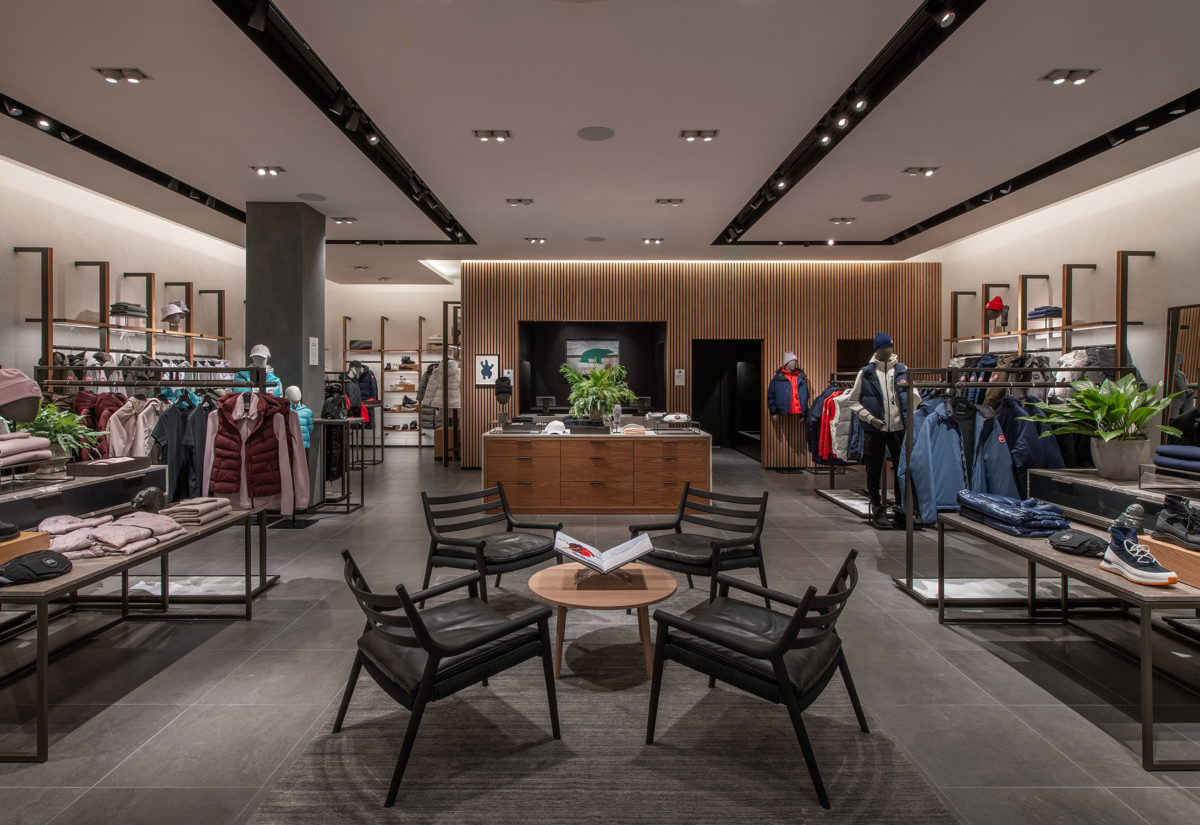Across EMEA and North America, localisation and heritage are becoming the central foundations of experiential design schemes. In reaction to years of intangible online retail and brand abstractions, retailers are looking to provide more physical and authentic experiences, anchored in original brand values. As Jon Grant, Interior Design Director in Benoy’s London studio, explains:
“More and more, we’re seeing big brands going back to their core roots and values. Nike and Adidas are doing it. And in the design schemes we’re working on, it’s about keeping things simple, not plastering logos everywhere or using multiple materials, not overdesigning. Clients and consumers today are looking for a pared-back authenticity. People want something they can touch and feel, something they can believe in.”
In the UK, this trend is in part a response to the gentrification of the high street, which created a uniformity of retail experiences for consumers. In North America, Bess Liscio, Senior Associate Director at Benoy’s Montréal studio, believes the pandemic also helped to accelerate engagement with more meaningful retail environments:
“People have emerged from Covid looking at their lives differently. They’re asking themselves, ‘Who do I want to give my money to?’, ‘What does this brand stand for and what does this purchase mean?’ So, retail interiors are starting to educate and engage on a more emotional level, showing customers how products are made, where materials come from. People want to enter stores feeling inspired, and leave feeling they’re part of something real. Retailers are responding to that.”
In the first-ever collaboration between its studios in North America and EMEA, Benoy is working on a range of stores and design development for performance apparel company, Canada Goose. The brand’s identity is firmly rooted in its Canadian heritage, with strong links to indigenous communities and sustainable design practices. And as Bess explains, retail locations bring the brand and its heritage qualities to life through unique experiences, art and design:
“All the artwork is real. All the soapstone sculptures are real. There’s nothing fake about it. They’ve created something very authentic, beautiful and robust, and the quality of the garments, the warmth and sustainability of the materials, is echoed in the elevated, authentic experience you find instore.”
The stripped-back aesthetic also resonates with younger consumers who, in their desire for visible eco-performance, increasingly shun retail excess or extravagance. Retailers who want to stay relevant need to adopt flexible spaces to present a more simplistic and considered proposition. As Bess observes, “we need to move to the speed of culture; young people can make or break a brand, and those decisions often come down to what’s perceived to be fake or real. The new logo is no logo; and if young consumers believe in it, you’ve got them forever.”
Find out more about our Interiors and Experiential Design work.






